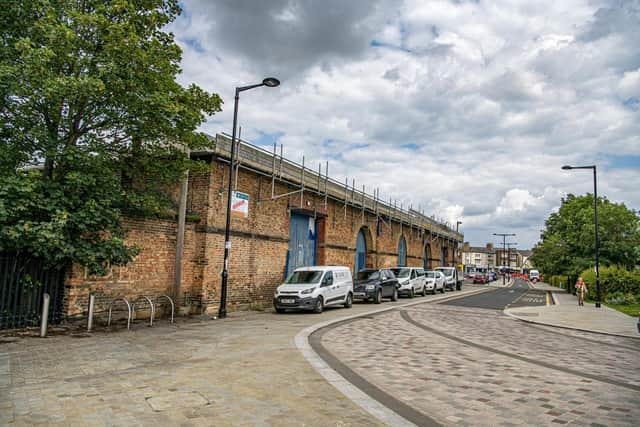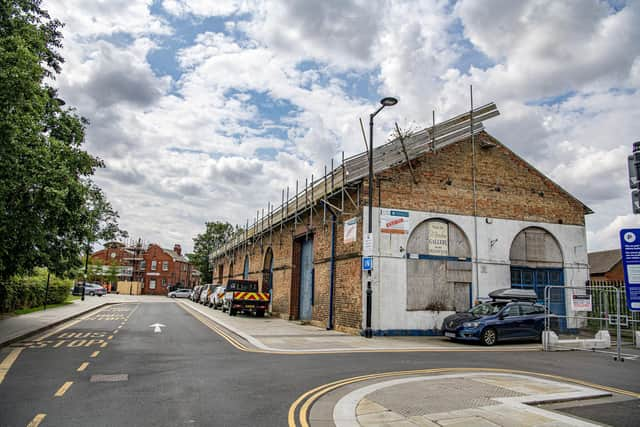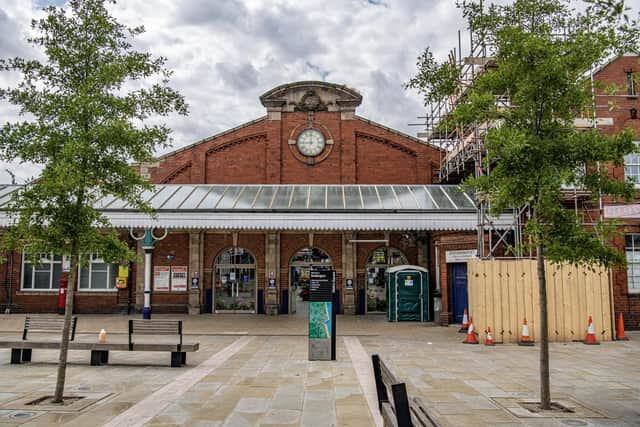Bridlington Station: Goods shed at Yorkshire railway station is Grade II-listed for the first time after local company campaigns to protect it from demolition
Last year East Riding Council sold the old railway building and in the sale particulars, stated that they would support proposals that included clearing and redeveloping the site.
Local architects Dixon & Associates sprung into action, immediately making an application to Historic England for the goods shed to be listed – a step which any member of the public with similar concerns for a building can take.
Advertisement
Hide AdAdvertisement
Hide AdHistoric England archivists researched the shed, dating it to 1846 and confirming that it is one of the few survivors of the ‘heroic age’ of railway expansion that tells the story of how freight was transported before containerisation.


The government then agreed with Historic England’s recommendation to grant the goods shed a Grade II designation – meaning it cannot be demolished and that an owner has a responsibility to maintain its fabric and condition.
Building surveyor Geremy Britton, a lifelong Bridlington resident, was one of the Dixon & Associates employees who fought for the goods shed's future.
"Our company keeps an eye on local developments, and we noticed it was up for sale. There was an option to demolish it, which was a concern. I’ve known the building all my life. It’s very old and an integral part of the station.”
Advertisement
Hide AdAdvertisement
Hide AdThe new owners have applied for planning permission to open a carpet store in the building, but have pledged to restore the dilapidated roof and carry out other repairs.


“The application going in sped the situation up. This is the last remaining goods shed that served Bridlington Station in the 19th and 20th centuries. It is possibly one of the best and largest examples that was present on land surrounding the station, much of which now comprises of Tesco and B&Q superstores. The listing is the result of a year-long wait.”
The research revealed that the building was designed by noted railway architect George Townsend Andrews, who worked for ‘railway king’ George Hudson’s companies. His other work includes listed stations at Scarborough and Hull Paragon.
Several other Andrews goods sheds have also been listed, including examples at Hutton Cranswick, Pocklington and Thorp Arch. Bridlington’s was unusual as it was built with five bays rather than the normal three. In the 1840s, these sheds were not commonplace, though 20 years later most stations had one.
Advertisement
Hide AdAdvertisement
Hide AdIn 2016, it was estimated that only 622 railway goods sheds in England were still standing, with many converted to ‘low grade’ uses. Only 13 were listed.


Mr Britton added: “We are delighted the new owner has recognised the significance of this building within Bridlington’s history in their proposals to restore rather than redevelop this site. I have personally offered my support to their scheme, and thank for them choosing to invest in the town.”
History of Bridlington Station goods shed
Bridlington Station opened in 1846, part of George Hudson’s York and North Midland lines. George Townsend Andrews was hired to design the complex. He was known for his flair – many of his buildings, even humble warehouses, had Diocletian windows.
The Bridlington goods shed had five bays and an open loading area at one end. At the time, the station was a terminus on a branch from Hull, but it then became a through-station with connections to Scarborough and York. The town then developed as a seaside resort, though there was heavy freight usage by Wolds farmers and the coastal oil refineries.
Advertisement
Hide AdAdvertisement
Hide Ad

In 1850, all of the warehouses on the line were leased to local cargo handling businesses on seven-year terms. A goods office and weigh-bridge built at the side of the shed processed the traffic.
Before World War One, freight was transported as ‘sundry’ in individual wagons, but as motor transport grew, handling methods on the railways changed. Two of the Diocletian windows were removed to create tall loading bays for lorries.
By the 1950s, limits were fixed to rail freight tariffs, meaning British Rail had to carry all goods requested by customers even at a loss. The introduction of containerisation in 1966 left goods shed obsolete and most had closed by the end of the decade. Some did survive under a franchise model until wagon traffic ended in 1984.
There have been some alterations to Bridlington’s shed since closure, including the loss of the open loading area and the removal of the internal railway track and platform. A concrete floor was laid to allow for its most recent use as a furniture warehouse.
Advertisement
Hide AdAdvertisement
Hide AdBridlington was one of the first examples of a ‘through’ goods shed later adopted elsewhere, and the line to Hull itself was the first to adopt standardisation of the designs of railway stations and ancillary buildings along a route.
